This post will walk you through the ups and downs of testosterone replacement therapy and give you an idea of how long it takes testosterone to work and what to do if it isn’t.
Testosterone replacement therapy can be used to help patients lose weight, improve their mood, and more, but what if you don’t experience those benefits? How long should you wait?
Learn more about how long you should be waiting for results and learn about which factors may be limiting your results in this guide…
Testosterone Replacement Therapy
Testosterone replacement therapy is used to treat patients who may have low circulating levels of testosterone in their bodies.
This condition is often referred to as hypogonadism which simply means that your sex hormones are no longer being produced at normal and optimal levels.
The unfortunate truth is that this condition will occur over time in both men and women.
The reduction in testosterone in men is referred to as andropause, while the reduction in both estrogen and progesterone in women is referred to as menopause.
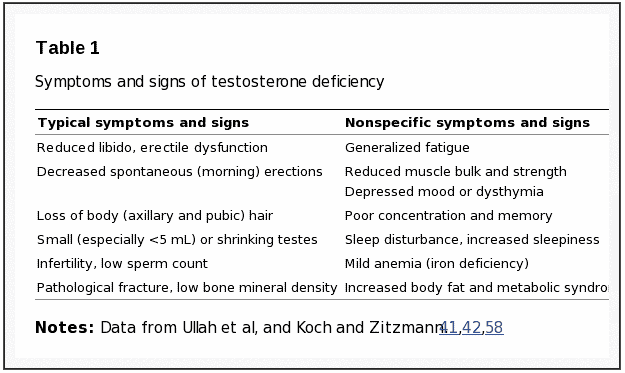
Women also experience low testosterone (just like men) but the difference is that the decline in testosterone may not be noticed as much in women compared to men due to the relative importance of other sex hormones.
But just like men, women tend to benefit tremendously from the use of testosterone (1).
Because of this testosterone replacement therapy has become widespread in both males and females, but not everyone tends to experience all of the benefits that testosterone replacement therapy has to offer.
Does that mean that testosterone simply doesn’t work in some people?
Maybe, but there are actually many common reasons that testosterone may not be working in your body and much of it has to do with 3 simple reasons:
Reasons why Testosterone May not be Working in your Body
Whenever we use hormones as medications it’s always helpful to consider the body as a template with which we should try to emulate.
For instance:
We know that men and women have different levels of testosterone circulating in their bodies, therefore, it makes sense that dosing should be different between males and females.
We also know that testosterone levels differ among individuals within the same gender, so there really shouldn’t be a “one-size” fits all testosterone dose for ALL males or for ALL females.
In addition to these basics, we also know that there is variability in how individuals metabolize hormones, medications, and nutrients.
Some people are considered to be “fast metabolizers” which means that their livers can chew through medications and hormones faster than others.
This means that the amount of testosterone someone takes will be unique but also HOW they take it, meaning how they put it into their body.
With these basics under your belt, you can begin to understand some reasons why standard TRT may not work in certain individuals.
#1. Dosing
The first and most common reason that testosterone may not be working in your body is simply because of dosing.
You may not be taking enough testosterone.
Because there is no “standard” dosing this means that each person will need a slightly different amount.
Having said that we (doctors) have to start somewhere when we start someone on Testosterone and unfortunately we don’t always get it right on the first try.
If you haven’t noticed an improvement in your symptoms then it’s a good idea to re-evaluate your serum testosterone levels (both free and total testosterone) to determine if your dose is adequate.
Sometimes it’s really just as simple as altering your dose.
#2. Route of Administration
The next big important topic has to do with how you are taking your testosterone.
There are 3 main ways to do this and each has its limitations:
- Gels & Creams: Gels and creams need to be absorbed into the skin and then into the bloodstream in order to be effective. Absorbing through the skin allows for a constant supply of testosterone to the body but has its limitations in that each individual may absorb medications and hormones at different rates. It’s also difficult to get fat-soluble hormones through the skin without certain carriers which may cause a reaction in certain people. Gels/creams tend to offer the best stability in terms of testosterone serum levels but they require frequent administration (such as up to twice per day) which can be a problem for some people. Also, gels/creams may be absorbed by other people that you come into contact with.
- Shots and Injections: Shots and injections have the advantage that they bypass transdermal (skin) absorption because they are delivered directly into the subcutaneous tissue or muscular tissue (depending on the length of the needle). On the flip side shots and injections may cause problems in that they deliver massive quantities of testosterone all at once which results in unstable serum testosterone levels depending on how frequently they are used. As a result, some people experience excess testosterone symptoms initially after the injection and low testosterone symptoms right before their next shot. Each one also requires an injection which may not be optimal for each person.
- Oral medications: One of the biggest disadvantages of using oral testosterone is that it is metabolized first by the liver immediately after absorption. This may result in partially metabolized (but biologically active) testosterone metabolites which may cause problems such as liver damage over time (2).
- Pellets (very similar to shots and injections): Pellets have the advantage in that they do not require daily or weekly dosing, but it comes at a price for certain people if the dosing is wrong after they are implanted. Some individuals may experience no benefits or symptoms of testosterone excess if the pellet concentration is not appropriately tuned for the body. In addition, any surgery (even if minor) carries certain risks such as infection.
The moral of the story?
If one form of administration is not working for you then it may be worth trying a different route.
#3. Time
Sometimes it’s just a matter of time and all you need to do is have some patience!
When you start digging into patient stories regarding hormonal therapy you will quickly start to understand that no two people are alike.
The dosage, amount of time it takes for benefits to kick in, and even which benefits tend to appear, vary wildly from person to person.
I’ve found in some of my patients that simply waiting a few weeks is the answer.
Always be patient and try not to make any snap decisions regarding your dose because it may lead to negative long-term consequences down the road.
Testosterone Benefits
Because testosterone is a hormone, which acts through genomic changes in each cell, it can take weeks to months for certain beneficial effects to kick in.
Genomic changes refer to the ability that testosterone has to literally alter genetic transcription and change which genes are being transcribed into proteins in your cells.
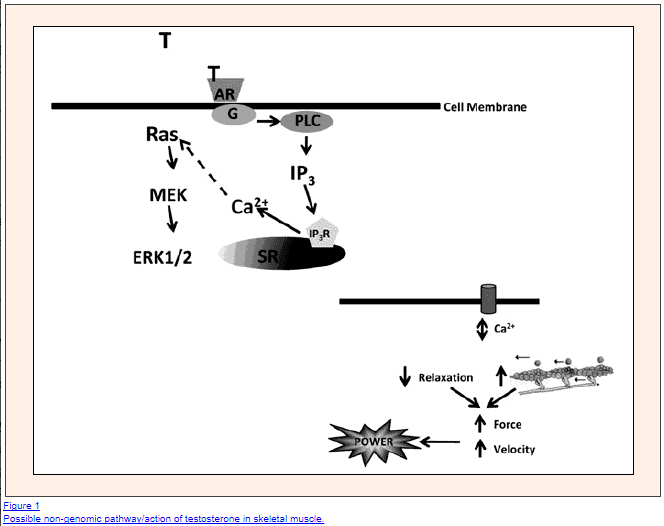
Certain benefits which are the result of these changes will, therefore, take some time to experience.
On the other hand, testosterone also has non-genomic effects such as its effects on skeletal muscle which result in an almost immediate increase in athletic performance (and sometimes weight loss).
So in order to get these benefits, you need to make sure you are:
A) Getting the right amount of testosterone (dose)
B) Using the right route and getting proper absorption
C) Waiting enough time for the effects to kick in if they require changes to cellular transcription
Even if all of these factors are taken care of some results appear quicker than others.
You can use the list below to help you understand how long it takes for testosterone to work.
How long Does it take for…
- Weight loss? If testosterone is going to help with weight loss it may start to work within 6-8 weeks after starting therapy. Remember that testosterone will simultaneously help you build muscle mass while reducing fat mass which may not result in an immediate drop in the scale. A better way to measure this fat loss is by assessing waist/hip measurements and ratios. You can read more about using testosterone for weight loss here.
- Improved muscle mass? You should notice a change to muscle contraction and the force you are able to lift almost immediately, but it may take your body weeks to months to build up lean muscle mass. This has less to do with testosterone and more to do with the time it takes your body to hypertrophy muscle. In order for this benefit to take place, you must also ensure that you are eating a proper and healthy diet! You won’t gain muscle mass unless you are also exercising and eating right.
- Increased libido? Initial changes to libido are often seen within the first month of therapy and you should notice changes within 3 weeks after starting therapy (3). It may, however, take up to 12 weeks to see a complete resolution or the total benefits that testosterone will provide. As a quick tip for women: you can increase the efficacy of testosterone at improving libido by applying transdermal testosterone vaginally.
- Changes to your mood? Changes to mood including a reduction in depression are usually seen within 6-8 weeks and should reach maximum effect by 9 weeks. It’s unlikely that you will notice an improvement after 3 months unless your dose is off or for some other reason.
- Improvement in erectile dysfunction? If you are a male taking testosterone for ED then you should notice an improvement within 3 weeks.
- Energy? Most people experience an increase in energy when taking Testosterone within 2 months after starting therapy (assuming they have fatigue at baseline). If you don’t have any issues with energy then it’s not likely to improve your baseline energy level.
Remember that these are simply guidelines and the exact time frame may vary between individuals.
If you are ever concerned that your testosterone may not be working then you should discuss other options such as your dose or route of administration with your prescribing physician.
How long does it take for Testosterone Cream to work?
Because each route of testosterone delivery is different there are also differences in terms of how quickly these “types” of testosterone tend to work.
What’s interesting is that increasing your dose via the transdermal route won’t necessarily increase your serum testosterone as there seem to be some diminishing returns via this route.
The best place to apply this type of testosterone is to the upper arms or forearms.
How long does it take for Testosterone Gel to work?
Testosterone gel tends to work better in men and most men who use this type of gel will notice normalization of serum testosterone levels by 3 months of daily use (5).
The best site for application tends to be the arms or shoulders.
How long does it take for Testosterone Pellets to work?
Because testosterone pellets are designed to work for several months (up to 6 months) they necessarily need to contain a large amount of testosterone.
The delivery device of the pellet also changes how quickly testosterone is released into the body.
After the first 60 days, the testosterone tends to drop.
Compared to testosterone, estradiol levels tend to peak around day 40-42 which is relevant to both men and women and should be monitored.
You will likely notice a rather fast change in your symptoms if you use testosterone pellets assuming that your dose is correct.
How long does it take for Testosterone Injections to work?
Much like pellets, testosterone shots tend to reach a peak in the serum within 24-48 hours after injection which then begins to decline to by 6-7 days to low-normal levels (7).
Testosterone injections, therefore, work fairly rapidly but need to be administered every 6-7 days for optimal results.
A better route may be to take testosterone injections in smaller doses twice per week which may allow for more table testosterone levels.
In general testosterone injections work better for men.
Boosting the Effect of Testosterone with Supplements
What if testosterone still isn’t working for you?
There are certain supplements that may be able to help you with symptomatic control.
While some supplements have been studied and shown to increase testosterone, in general, most testosterone supplements modulate the symptoms of low testosterone without altering free and total testosterone.
This may not be a problem, however, if you are interested in benefits such as libido control, weight loss, and increased energy.
It’s worth looking at some of these supplements to determine if they have any place in your current regimen.
The good news is that they can also be safely added to an existing testosterone replacement therapy program.
Supplements that may improve the symptoms of low testosterone include:
- Maca – Maca doesn’t have any direct effect on serum testosterone but it has been shown to help improve mood, increase sex drive and balance sex hormones (including estrogen and progesterone).
- D-aspartic Acid – This amino acid may directly stimulate the release of testosterone in patients who are deficient.
- Fenugreek – Fenugreek helps promotes healthy testosterone levels by improving testosterone conversion by acting like a 5 alpha-reductase inhibitor.
You can also learn more about using testosterone boosters in this post.
What to do Next
Testosterone replacement therapy is a safe and effective way to improve many symptoms associated with low testosterone such as weight gain, fatigue, and decreased libido.
Using TRT appropriately means you need to have the right dose as well as the right route of administration for your body.
If you are taking testosterone and not noticing any improvement then make sure you discuss other options with your doctor.
It’s also a great idea to assess your serum total testosterone, free testosterone, estradiol, and SHBG which all may potentially interfere with testosterone function.
And remember:
Make sure you are allowing enough time for these benefits to kick in (in some people this may take up to 3 months).
Now I want to hear from you:
Are you taking testosterone?
Is it working in your body?
Why or why not?
Leave your questions or comments below!
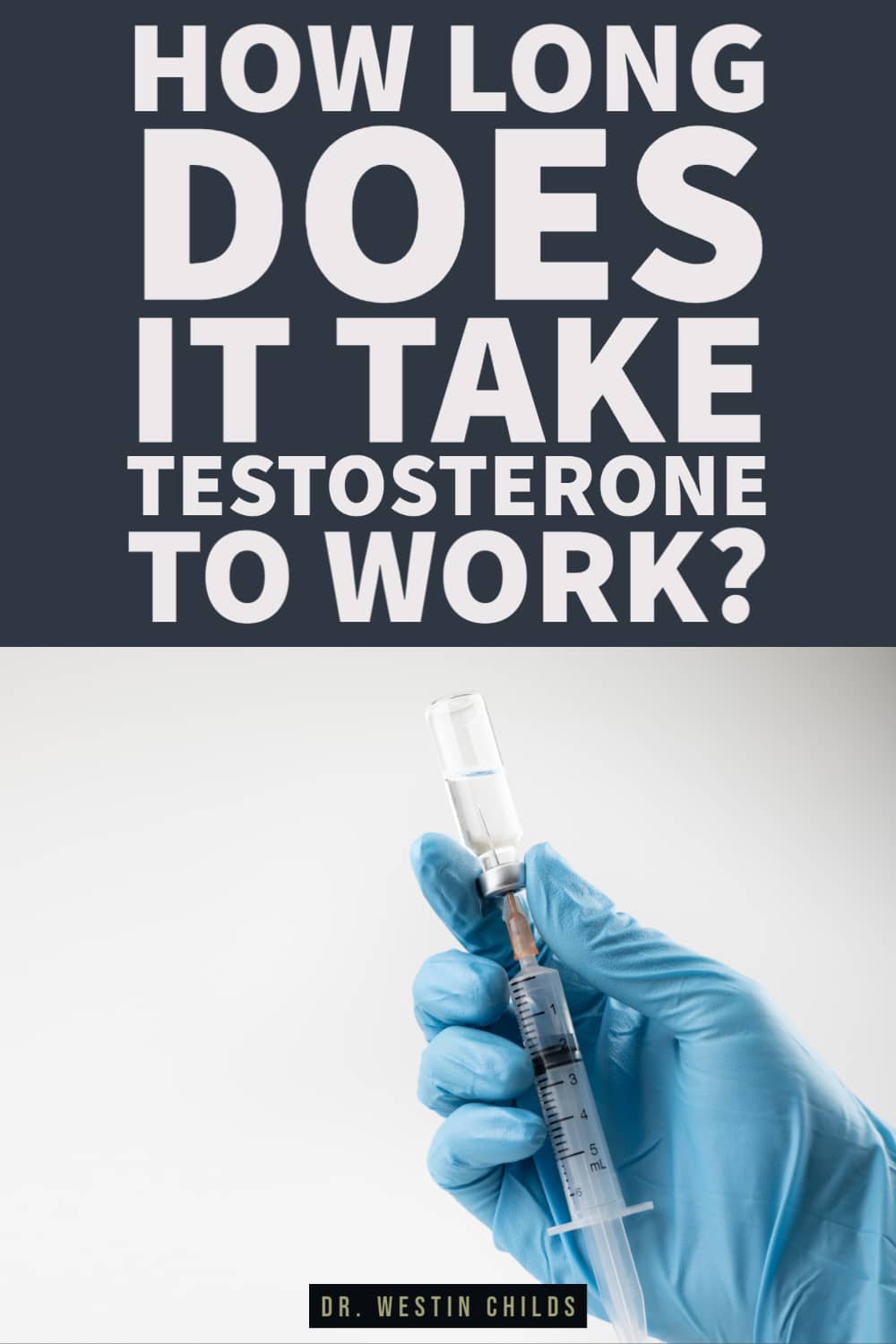
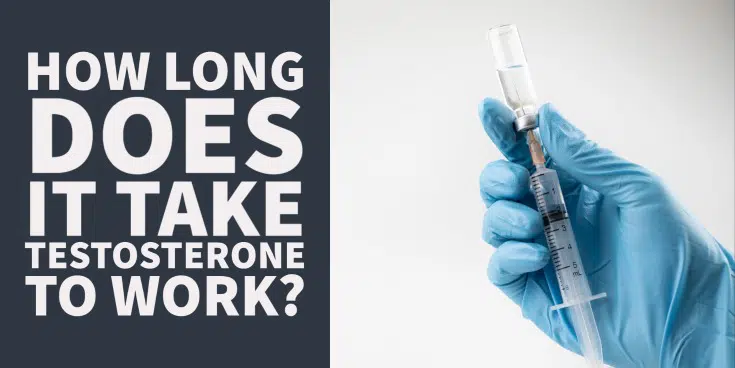


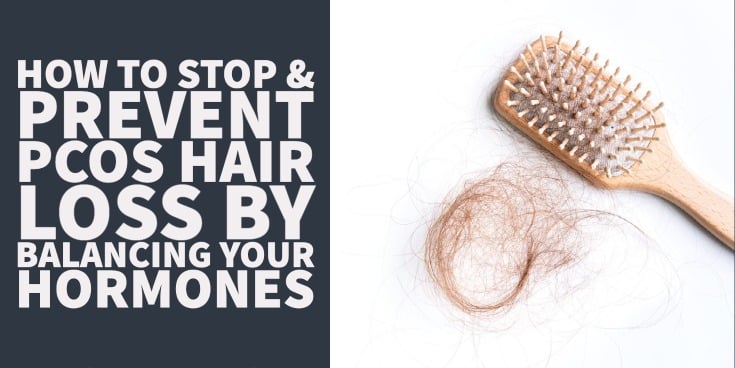

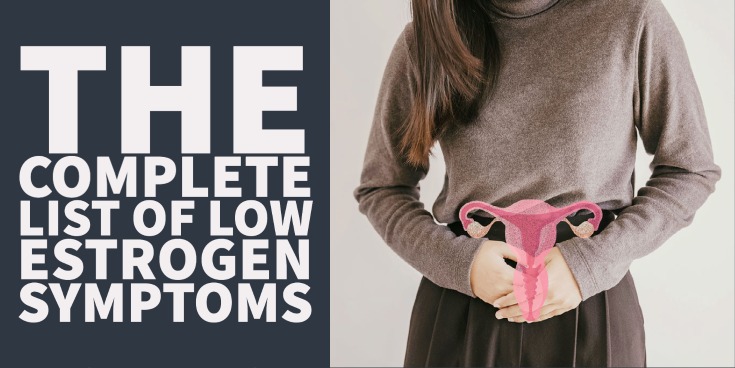
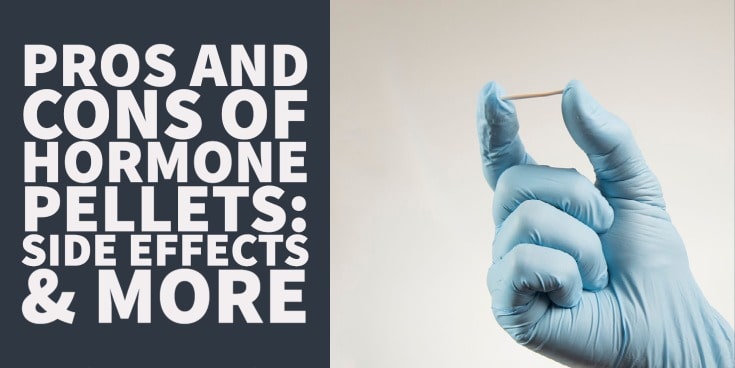

I don’t think a woman (or anyone really) should take testosterone unless they have a true deficiency. I have been in medically-induced menopause for 5 years (no ovaries or uterus), and I’ve had 3 separate doctors, with 3 different doses/methods of administration overdose me on testosterone. It has damaged my metabolism horribly and hopefully, not permanently. However, it has been a year and I am still struggling. Even post-menopause, my body was making enough testosterone to be within the normal laboratory(ies) range, usually steady at around 25-30. However, every doctor believed I needed testosterone because I had no ovaries. I had injections (purportedly ‘low dose’), creams/gels and vaginal suppositories. Each time, within a month and sometimes days, my estradiol would shoot up to 300+ and my FT4 would be over 1.8 (into hyperthyroid) and my TSH would go to nearly immeasurable (less than .34). My body aromatizes any additional testosterone into estradiol extremely rapidly, resulting in massive amounts of estradiol, which my liver cannot clear. In addition, my liver enzymes became elevated and I still struggle with this. Once testosterone was ceased, ALL the hormones that were elevated crash, leaving me severely hypo-thyroid, extremely low in estradiol and temporarily also nearly completely lacking in testosterone. Each time this happens my HPA-axis becomes unstable and traumatized. It has left me with intractible insomnia, which nothing will help. The only thing doctors can tell me is that ‘once my hormones are balanced’ and ‘settle down’ perhaps things will get better. Unfortunately, this is an extremely slow process (if it’s happening at all), because while I can get my estradiol level somewhat stable (at around 100), my thyroid is a mess. My FT4 is 1.3, my TSH is .99 but my FT3 is 2.5 and my RevT3 is 18. I am left with euthyroid sick syndrome, which will not resolve. Any fluctuation in my thyroid immediately effects estradiol and the imbalance perpetuates.
So, my experience is that women should be extremely careful when using testosterone because if they have a body that aromatizes it quickly, it could cause serious problems to other hormones. Women who have a history of PCOS or endometriosis (like me), should be ESPECIALLY careful. And I would say NEVER use testosterone without first being sure that you are clinically deficient.
Hi Stephanie,
You are correct in that no women (or men) should ever take hormonal therapy that they don’t need and without documented deficiency. Testosterone replacement therapy, if done appropriately, is quite safe.
I was very low and I use the pellet now. It has been life-altering and I feel great! My head feels clearer, I am losing weight and before the pellet, I didn’t even know what a libido was. I haven’t noticed any bad side effects and I think my provider has done a good job of figuring out my correct dose.
Hi Sarah,
Glad it’s working for you! Pellets definitely work for some people and not for others, it sounds like you are in the former camp.
I should come back and say that it didn’t work out after all. My body kept rejecting the pellet. Time for a different plan.
Sarah,
What dose did you start with and route. How long did it take you to feel results in libido, energy and weight loss?
Hi I just changed from sus 250 injections weekly or bi weekly. I have now changed to testogel daily. I have been on it for a month but notice my body feels softer and weaker since stopping the injections. My libido has also decreased. My test levels are on the low side. Is this due to the change from injections to gel. How long before the gel kicks in
Hi,
What is your interpretation of my most recent results. The morning of my blood draw I applied 200mg T-cream to one arm and blood drawn from the other. I do not know how much 200mg would affect the results. Does it look like it is being absorbed into my body?
DATE – Free Testosterone (RANGE – 35.0-155) Total Testosterone (RANGE – 250-1100)
1/20/2018 – 47.4 / 294 — Results after using 200 mg/mL compound testosterone cream. Following Dr’s instructions, I applied the 200mg testosterone cream the morning of my blood work on my left shoulder (6:15am) and had the blood drawn from my right arm (7:45am).
12/5/2017 – 24.1 / 193 — Results after using 100 mg/ml compound testosterone cream. DID NOT APPLY CREAM BEFORE BLOOD DRAW.
10/30/2017 – 44.6 / 310 — Results after being off Clomid for 90 days
8/11/2017 – 98.6 / 616 — Results after taking Clomid for 90 day
6/9/2017 – 94.7 / 567 — Results after taking Clomid for 30 days
4/21/2017 – 38.1 / 269 — Went to see Dr Francyk about extreme fatigue. No testosterone treatment at this time.
11/26/2013 – 73.8 / 426 — After several months of sporadic availability of testosterone via shots
6/11/2013 – 6.6 / 175 — Went to see Dr after showing symptoms of meningitis, valley fever Hep C. All the tests were negative.
Thanks!
Dr. Childs, I just want to thank you from the bottom of my heart for giving us so much free information. I have learned so much from you and am better equipped to have a discussion with my doctor. Just a few questions:
1. She is starting me on testosterone cream and progesterone pills. She never checked my reverse t3. If I cannot loose the 50 lbs I gained, does that indicate high rt3?
2. She stated that after a while meds need to be increased. She has a few patients on 8 grains of naturethroid .Would that not indicate the patient needs to be on t3 and naturethroid?
3. Does both progesterone and tesosterone need to be taken two weeks on and two weeks off?
Thank you
Big problems I think – Hashimoto s, gaining 20 pounds in 2 months with no change and eating less. Diagnosed with low testosterone and progesterone. High antibodies, high TSH. I am getting worse. I take 1 ML compound cream and it’s been a little over 2 months. I am so depressed with my weight because I work hard to stay in my usual 125-130.
Hi Sally,
I would check out this article on how to treat Hashimoto’s which probably plays the most important role in your weight gain at this time: https://www.restartmed.com/hashimotos-thyroiditis/
Thanks for this informative post! You’re one of the few doctors talking about this, so good on you for being on top of research. I have some questions.
I am premenopausal and have been suffering from T deficiency for a few years now. I tried pellets and although they cleared up my symptoms, they also caused facial hair growth which was extremely upsetting to me – upsetting enough to make me quit the pellets altogether.
I have just 3 weeks ago started a 1% T cream regimen, 1.0 mL applied to the outer thigh at the end of every day. It does not seem to be working yet, but the research I have read gives good outcomes at 12 weeks for transdermal T. I am really desperate for symptom relief, and I think my next option after this would be to go back to the pellets, at a much lower dose and gradually increasing until I experience relief.
The problem is, the pellets are much, much more expensive for me than the cream. What’s more, the lower dose – so as to avoid side effects – would mean more frequent insertion, which could drive up my costs even more.
What would you recommend? How long should I stay on the cream before deciding whether it is working? I CAN pay for the pellets but would like to keep my costs lower if at all possible. How long should I wait for the cream before trying the pellets? Would trying a higher dose cream be a better option than returning to pellets if I see no relief after 12 weeks?
Sorry for so many questions. You are one of the only doctors I see writing about this in detail, so I consider you a very valuable resource.
I’ve been on testosterone for about 5-6 years now and it has been prescribed by Dr. It started out with a hernia surgery gone bad then led to an orchiectomy (loss of testicle) so I had to be put on it. At first things were great and it changed my world for the better. My mood, depression, energy, muscle mass, sex drive all of that improved. Here lately I’ve had issues with no sex drive at all though. I will have some good nights where everything is great and then some where I can’t step up to the plate. It sucks and is embarrassing but I can’t control it. It’s like I have no focus at all. One thing, sound or thought distracts me and it’s all over. Or I just can’t even get in the mood. Not sure if I need to up my dosage now that I’m older or what. My sex life is pretty much been daily for the past 5 years which has been great and amazing but the last 6 months I’ve dropped the ball on that one. Am I just getting too old to hang that much or should I talk to my dr about the issue of getting on a stronger dose? Or would something else help me out? I’m currently 38 and I’m prescribed 1.5cc of test 200 every 2 weeks.
Hi Rob,
Before you make any changes you’ll want to make sure that you have an optimal total/free testosterone and ensure that your estradiol is not too high. A problem with either of these hormones could result in the symptoms you are having but you can’t do much without knowing those values.
Dr. Childs, actually I’m not into taking testosterone in many different ways but, how can we ensure that this will not make any harm to the body? Since many people nowadays are into taking testosterone, do we also educate them on its side effects to the body? And how can it help you to cure erectile dysfunction?
Hi Dr. Castellano,
I love to use testosterone in men because it is so effective and helps them so quickly. But yes, it’s always a good idea to start with natural approaches to see if you can improve testosterone in that way. For instance, treating insulin resistance may be a quick way to naturally improve testosterone in some men. But the catch is that giving testosterone will also treat insulin resistance as well, so you can really go either way.
In terms of ED, there are other hormones to look at such as estradiol which also affects libido.
Can I take ashwagandha with hrt therapy. Does it interact against each other. I wake up at 3:00 every morning was thinking about it for high cortisol.
Hello. I just started my hrt last night. My testosterone is extremely low as well as my free testosterone (1.5). Vitamin D and DHEA levels are also low. My doctor started me on DHEA and vitamin D pills also.4 ml of injectable testosterone. I have one ovary left after having an emergency histerectomy about 6 years ago and I’m 38 years old. I have all the main symptoms that are associated with low levels (some being worse than others) along with hot flashes, night sweats and terrible inflammation in my body. My question is how long will it take for me to hopefully start to feel better? I read your article (which was extremely helpful thank you so much for the information) and it said around 3 weeks. Since my levels are completely bottomed out I wasn’t sure if I would feel the effects sooner.
Thank you,
Trina
Hi Trina,
It usually takes a good 4-8 weeks for hormones to kick in and for patients to start feeling better. Some patients experience the benefits sooner and others later, it just depends.
Thank you for your response, Dr. Childs.
Hello Dr. Childs,
I just recently started TRT actually this was my 6th shot. They have done my blood test but won’t let me know till next week what the results are.
When I first was diagnosed with low T, my blood count was 191, and then the second was 164. My first shot was 200mg, and the next 5 have been 140mg.
I’m not exactly sure of what is meant by “nipple sensation”, but seems when I have a shirt on and the shirt rubs against my nipples t ht em seem to feel “swollen” to use a word.
Also in just resent days I seem to almost come to crying over what would never cause me to normally. After the 3rd shot I did notice firmer erections in the morning on Thursday and Friday ( my shot day is Tuesday). But when I got the 4th and 5th they seem to have gone back to what I had originally erections but not “hard” , firm if you will, and quick to loose them if I should stop midstream of masturbation. Also when I started my wieght was 193lbs, now I’m pushing 203, I do work out and excercise 6 days a week. 3 with wieghts 3 with cardio. Seems I gained
Can you answer as to why any of the above could be the “problem ?
I’m not quitting the TRT just trying to determine if I should expect any more changes. Thank you for your time.
Hi Marc,
Those symptoms are usually related to excess estrogen. You should have an ultrasensitive estradiol test and you may need to use an estrogen blocker.
I was on the testosterone cream for about 9 Months. At the very beginning, it was like night and day. I felt great, libido was back, rock hard erections again, morning wood, etc etc. It lasted for about 2 months, then it crashed. After the first month of being on the cream, I went and got my labs done and my T levels were great. Since then, they’ve dropped by over half, despite me doubling the amount of cream I was using. So, after all the struggles, the Dr. got me cream from a different place at the maximum dose allowed, and once again I felt great, libido was back, etc etc. It lasted about 3 weeks and then everything tanked again. I have since been back to the Dr. only to find out that my levels are now even lower than before, despite using the higher dosage of cream and applying more of it per day.
So, 3 weeks ago, they put me on pellets. They said I’d feel a difference after a week. Here I am exactly on the 3 week date, and I don’t feel any different at all. No drive, no libido, no sexual interest, tired all the time again, etc etc. Very frustrating.
I’ll say this, for the limited amount of time that the T-cream worked, life was great. I felt like I was 20-something again. But it was short lived. I haven’t been able to get my levels back up to where they were at that point no matter what I do. It’s like I got a 2 month teaser that basically said “here’s how wonderful your life COULD be IF you could get your T levels right”. This hormonal roller coaster has absolutely SUCKED. I don’t know if the Dr. is doing something wrong, or what the heck is going on. I’m just tired of not feeling right. And the worst part about it is that when it comes crashing down, I’m worse off afterwards than I was when I started this process. When the T drops to half or below, now I have no libido, struggle with erections (if I get one at all), tired, no ambition, moody, etc. It’s all VERY maddening for a 47 y/o man!!! And like I said, it wasn’t as bad BEFORE I started the T therapy. It makes me wish I’d never started it at all. But since I cannot change that, then I wish they could figure out what it takes to get my T up where it belongs and keep it there! I’m tired of feeling like I’m living on a yo-yo…..
Hi Dave,
Look into your estradiol level while taking testosterone as high estrogen can limit the effectiveness of TRT. These are really the basics of TRT but because physicians aren’t trained in hormone replacement therapy they usually don’t know how to proceed with simple issues.
Thank you for the reply. I’m actually going to a Hormone Clinic that specializes in hormone therapy. It’s not just my general practitioner that is dealing with my hormones. I will definitely bring up the estradiol subject at next bloodwork check, which just so happens to be this coming Monday. They should be pulling full Labs so I will definitely have them look at that. Again, I definitely appreciate your response and we will see what happens come this Monday.
Hi. I have been taking vaginal testosterone 6 days a week for the past 3 weeks. It is a small dose for now since this is new. I haven’t had any changes yet. I was hoping to increase sex drive, wt loss and mood change.. I have no side effects at all not good or bad .. I just the same. I assume I need to wait it out at least 6 to 8 weeks before I bring this up to my endocrinologist right???? .. please let me know what you think.
Hi Debra,
Not everyone will notice changes with testosterone replacement therapy. I would say most women, probably 6 out of 10, experience some benefit but there are a few that do not. This could either be a function of not enough time, your dose, or just that you aren’t a responder.
Hi, my husband’s T level is severely low (185) and just got on testosterone cream for about 4 weeks. Doctor slowly increased his dose from 20mg to 60mg within the first 4 weeks. He is applying them at night per Doctors recommendation. He has not yet felt the effect. How long before he starts feeling more energetic, more revived, more happy, good sense of well-being, no more mental or psychological issues? Thank you in advance for your help!
Hi H,
It can take a good 6-8 weeks for Testosterone to kick in (assuming his dose is correct).
So, I was told my Testosterone was “in the basement”. The Dr said it was LESS THAN 3.0. Yep thats THREE. So, I just started the cream today. She also put me on the Estrogen patch and some Progesterone because those numbers were off too. Dont know what they all mean, but she said: TSH 1.38, DHES 48, ESTRODIAL 56, PROGESTERONE .9, and Testosterone less than 3.0
Can I start taking MACA too without discussing it with the Dr? Will it hurt?
Symptoms: ZERO Libido. Weepy. Emotional. EXHAUSTED. No muscle tone. Foggy memory.
Hi Jo,
The use of Maca shouldn’t interfere with your current treatment but be sure to check with your Doctor before making any changes!
I think many people miss a major component of what testosterone does. I am a double stage IV cancer (Head & Neck tumors which metastasized to my lymph nodes) survivor. 6 Years after my treatment, and although I’m cancer free, they discovered that the Radiation damaged my thyroid and the chemo damaged my pituitary. This resulted in a testosterone count of 131. Now, I’m no spring chicken, but I’m a former natural competitive bodybuilder who runs a martial arts business and I’ve obtained multiple fitness and sports nutrition certifications, my first going back to 1989. The docs prescribed Androgel, but it continued to drop until hitting 32. I felt as if I could barely function. They then switched me to testosterone injections and I quickly jumped up to the high 600’s and I feel 100% better as well getting back into semi-decent athletic shape (at least for a grandpaw). So, when I talk to those who struggle to see the effects of adding testosterone to their regimen, I always ask them about their protein intake and I’m never surprised to learn that their daily intake of protein is nowhere near what it should be. I encourage them to Google “testosterone therapy and protein synthesis” to appease their own curiosity of exactly what effect Testosterone has on their metabolism. Too many people only equate testosterone with hormone spikes (and the bodybuilding YouTube videos and the so-called “Bro-Science” experts don’t help) and they forget about its basic function.
My husband started biote Dec. 6, 2017. His natural T was at 595 before it. He had 11 pellets put in and went for a 5 week check up Jan. 15, 2018. These pellets were supposed to be re-upped every 3 months. Anyway, in the meantime, we got pregnant at 2.5 weeks of him starting biote on around Dec. 23 with no effort, one and done. We weren’t “trying” but just decided to give it a go ok a whim since I noticed ovulation was around Dec. 24. We had no idea at the time that TRT hindered, not helped, sperm production. We thought more T = more sperm. He didn’t ask his Dr. about those kind of side effects since we weren’t actuall “trying”. Anyway, we got the positive test and essentially had a miscarriage right after. My Dr. said to go ahead and try again right away since I could ovulate quickly due to my cycle trying to regulate and having my miscarriage so close to my normal period date. In the meantime, my husband went for his 5 week check up of T levels to see how his body took to it. They expected a total T of 900-1000. Well, he was at 313, almost half of his natural level. They were all surprised so they have him 6 more pellets. We started trying again around the week of Jan. 21, 2018. We had no luck for months and got worried. In July, I saw a fertility Dr and was cleared; he went back to his Dr to see if he needed to get back on biote. As I said, we thought maybe it helped us in Dec. That’s when we learned it was like male birth control lol. His Dr. said in her experience, it would take him probably to Dec 2018 to be back to normal, about a year since the last pellets. We were hoping that this is the only issue for not conceiving so we asked her around when he would have become sterile. She said her data and experience said it takes 4-6 weeks for males to feel/see the full effects which is why he came back for a 5 week check up Jan 15. She told us some guys take only 4, some take the full 6. She suspects he would have been sterile at 5 weeks since his T was so low with the pellets in that it was obvious his body reacted negatively, stopping his own T production and more than likely the sperm had been shut down by then too. She said it was still probably trying to be normal at that 2.5 week mark we got pregnant but probably shut down within the next 2 weeks. She also said that with the additional pellets put in, he was most definitely sterile around the next week or so when we started again since now he had 17 pellets with his body reacting negatively. In addition, he had felt depressed while on it the whole time in Dec through about April-May probably due to his T production which is why he never went back. So, they tested his total T again in July and it was now 495, so finally trying to produce again. He got his sperm tested Aug 2 and it was still 0, test 6 weeks later in Sept and it was 340k. It wasn’t millions but at least waking up. My question is, does her timeline about when he probably became sterile sound about right, around the 5 week check up mark? We know every man is different but based on the numbers and her info, just for peace of mind for us, is it highly likely he was sterile for most of Jan 2018 and forward? As I said, we hope that this is the only issue since there doesn’t seem to be other issues.
I haven’t seen my post on here but it tells me it detects a duplicate post when I try to report. Can anyone tell me if they see my previous post? It may be too long or something.
Never mind, I see it now!
I have been taking injections for about 8 months 1 CC of 200 ml testosterone every 14 days. Levels were around 200 when I started. Had them checked recently and they actually went down a little both testosterone and free testosterone. Doc has decided to double does and see what happens. Took the first dose yesterday. I should say that I felt better and had a better sex drive when I first started but that has since subsided. Thanks your thoughts would be appreciated.
Hi Wayne,
It’s better to take a smaller dose less frequently than a very large dose infrequently. For instance, you might find yourself doing well on 1 cc each week as opposed to 2 cc’s every other week. This prevents episodes of feeling “amazing” followed by crashes due to how testosterone fluctuates until your next dose. Altering how you take your medication may be all you need to feel optimal every day.
Took the testosterone shot, I have put on 8lbs in 8 days. How long does the shot stay in the system/ will the weight go down?
I just started testosterone injections I’m injecting 100 mls a week. I’m in my second week I have more energy than I did but libido wise, still way behind. How long should go start working my sex drive my relationship is suffering severely just need to have some kind of window of time to work with (HELP!!).
Do you have a recommendation for a testosterone cream for women?
Hi Sarah,
I recommend using a bio-identical testosterone from a compounding pharmacy.
Hello Dr. Childs,
I wrote on another blog post but this one is more relevant to my question. I am a 24 year old woman with currently a testosterone serum (final) of 8. It was even lower last time I got blood work. My TSH is .0546 T4 0.81 T3 is 2.8 and my sex hormone binding glob. serum is 51.7
My question to you is would you consider putting me on a testosterone gel/cream at my age? Would this effect my fertility in any way? I also have hormonal acne right now and I know testosterone might make it worse so I’m a little nervous about that as well.
Hello
I had an orchiectomy almost a year ago and I haven’t been the same since I recently started the gel almost a month ago and nothing has changed do I just need to give it more time because I am pushing more for the injections only because I feel like the gel isn’t working but I know the gel is safer should I just be more patient?
Hi Justin,
You’ll want to play around with the various types of testosterone to figure out which route works best for you. The gel may work for some people and not for others so switching to the injections would be a good idea. You also need to make sure that you are receiving a high enough dose. Because doctors are so inexperienced using hormone therapy, they often underdose patients on accident.
Hello Dr. Child’s,
I am a 56 yo female. After years of treatment for Lyme Disease and many co infections I was put on HRT for low T (measuring 9) I had crashing fatigued, HF, severe sweating along with chills, low body temp, brainfog, bladder pain and urgency, insomnia, zero motivation, mood swings and for about 7-10 days each month all of these symptoms increase and my hands would break out with eczema and I would be bedridden. Estrogen made everything much worse but the 4mg of compounded T cream fixed everything in three days. I still have some rough days during my cycle (even though I’ve had a hysterectomy still have ovaries)
I have been doing fantastic with my rehabilitation for the last year but last month I went down like a brick wall with all symptoms returning. Could this be an absorption issue? We increased the cream to 6mg and then 8mg with no change. We started the subcutaneous T .1ml shots a few days ago and still waiting for something to happen. Some other results that may or not be effecting my symptoms are low tsh .34, multinodular goiter and sub clinical Graves Disease.
Thanks for your help
Cheryl
The dr increased my testosterone from 0.5 to 2.50 now I am feeling anxious lightheaded and kind of blah, do you think it’s too high now? I have awful night sweats as well. I take bio identical compound hormones. Since my hysterectomy 2.5 years ago they haven’t got my hormones balanced yet it’s so frustrating.
Hi Tammy,
The best way to check would be to get your free and total testosterone levels checked and compare those results with your symptoms.
Hi Doctor
I started the TRT treatment 3/1/23
I’m on the gel 20.25 mg
So far I’m still experiencing the fatigue and depression, hardly no libido and ED. My total testosterone was 134 but now it’s 348. I know each person is different but when should I start feeling a change like energy, less fatigue and lower depression. And libido rise? I know it will probably be awhile before the ED improves. I’m 62 years old
Thank you
Steven
If you apply the gel packet to your upper arms, should you apply it to both arms or one arm?
Male 45 free testosterone at start was 235 . I was put on androgel and did this for 6 weeks . I didn’t like the gel and how you have to keep white marks on your arms , so I asked the Dr . If I could check the levels to see if anything was changed before trying something else . My free testosterone went down to 125 with using the gel for 6 weeks .! I don’t even understand how that is even possible, but the Dr. Said we will go ahead and start with self injections of testosterone. I am very glad to hear this because I will know the medication is getting into my body now .
I guess some people do not absorb medication through the skin very well and I must be one of them ?
Hi Paul,
Yes, that is definitely the case. Some people do better on injections and others on gels.
I am 43 years old male. I’ve never taken any kind of hormones. I’m very thin at 120 6 ft tall. my libido has been non-existent for at least 6 months. I have no energy and really no drive. my muscles all seem to have shrunk greatly and I can barely lift simple things I use to be able to lift fine. I had a friend tell me about some supplements he had and after the first time I took them I felt wonderful. I guess I’m wondering if this low testosterone could be my problem? thank you for any suggestions doctor
Hi Jeremy,
It’s certainly possible. You can determine if it’s contributing with a quick set of tests which would be worth looking into.